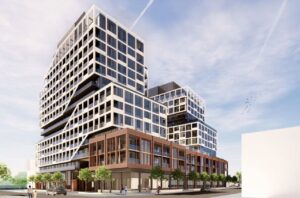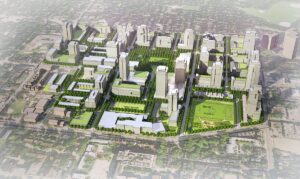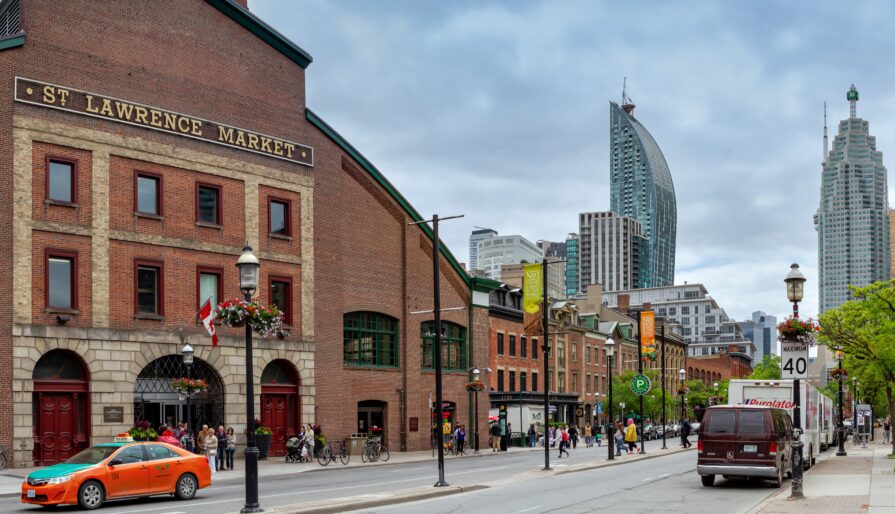As the city of Toronto accelerates efforts to address housing affordability, inclusivity and the barriers inhibiting rapid housing development were top of mind at the Urban Land Institute’s Spring Meeting in mid-May.
Toronto urgently needs more housing, of all sizes and tenures. With flagship government initiatives like Housing Now failing to gain traction since it launched in 2019 — despite the City’s $1.3 billion commitment — any attempts to expedite the delivery of purpose-built rental housing have stalled. This failure to get shovels in the ground comes at a time when the need for more purpose-built rental housing has never been greater. Toronto’s vacancy rate currently sits at 1.7 per cent, and home ownership rates have dropped to the lowest level on record. Meanwhile, there is increased pressure to expand rental housing supply to support the anticipated population and economic growth through unprecedented immigration.
Although the Housing Now program suffered largely from pandemic-driven challenges, including lockdowns, supply chain issues, labour shortages and rising construction costs, the fact remains Toronto has been short on housing for years.
“We have only recently begun to get some really good data that demonstrates the magnitude of the supply challenge,” said Jennifer Keesmaat of Markee Developments/The Keesmaat Group and moderator of the session entitled, Housing Affordability: Success is in the Mix. “This data puts a fine point on what’s been happening over the course of the past five to ten years — that we have a complete mismatch between the amount of growth we are seeing and the amount of supply we are delivering across the city. Anyone who looks around and sees the cranes in the sky is shocked by this because there is so much being built. But the truth is we are growing at an astronomical rate, and we have not seen our housing stats increase substantially after 2016.”
According to Keesmaat, the current supply deficit and the myth that the market will just “take care of affordability” have led to interventions by the government to ensure lower-income residents aren’t edged out of coveted neighbourhoods. But Frank Lewinberg, Partner Emeritus at Urban Strategies Inc., said a comparable conversation was happening back in the 1970s.
“It was a similar time,” he said. “We were talking about the fast-rising housing prices, the difficulty of young people with families getting housing, and the fact that lower income people had no hope at all.”
Hence why the federal government decided to invest in projects like the St. Lawrence Neighbourhood, Canada’s first attempt to develop a deliberately mixed-use, mixed-income community. As an architect on the project, Lewinberg said the mix of market-priced housing with public, non-profit and co-op residences became a catalyst for the neighbourhood at large, which was supported by necessary services like schools, supermarkets, restaurants and retail shops.
 Today, the St. Lawrence Neighbourhood serves as a model for similar mixed-income projects, including Regent Park, Alexandra Park (pictured right), and Lawrence Heights. As these examples show, the pursuit of inclusivity by blurring the income lines of residents can be an effective strategy for strengthening the city’s communities. But as the massive surge in population growth fuels an unprecedented housing crisis in Toronto, is the mixed-income approach to city-building still the right way forward?
Today, the St. Lawrence Neighbourhood serves as a model for similar mixed-income projects, including Regent Park, Alexandra Park (pictured right), and Lawrence Heights. As these examples show, the pursuit of inclusivity by blurring the income lines of residents can be an effective strategy for strengthening the city’s communities. But as the massive surge in population growth fuels an unprecedented housing crisis in Toronto, is the mixed-income approach to city-building still the right way forward?
“We are welcoming 500,000 new Canadians on an annual basis, many of whom will be settling here in the GTA,” said Brad Bradford, City Councillor representing Beaches and East York, and candidate in the current Toronto mayoral race. “[This] puts a tremendous amount of challenge before us with respect to housing, coupled with 30 per cent increased cost of construction, 40 per cent increased cost in financing, and the shortage of labour and trades. We are facing historic headwinds.”
In addition to these challenges, there are rough political waters to navigate. As Bradford put it, “planning is politics” and politicians are not always known for getting things right.
“Some politicians have literally made their careers on the backs of opposing housing,” he said, citing examples of projects that were sidelined for having too many storeys or other unfavourable design features. “How do we create a culture of change? How do we move away from saying ‘no’ to saying ‘yes’ to housing opportunities?”
Bradford, like his fellow panelists, believe the answer still lies in the cross-subsidy model, calling it the “key to unlocking housing.” While the approach alleviates some of the financial burden given the market units cross-subsidize the affordable ones, the long-term benefits for the residents can include poverty alleviation, improved housing quality and services, better location and amenities — all of which contribute to healthier economic conditions and help break down barriers.
 But to be truly feasible, the panelists agreed that large, mixed-income projects require additional financing from governments; less prohibitive fees and red tape; and a more outcome- vs. process-focused approach. According to Heela Omarkhail, VP, Social Impact at the Daniels Corporation, they also need strong partnerships.
But to be truly feasible, the panelists agreed that large, mixed-income projects require additional financing from governments; less prohibitive fees and red tape; and a more outcome- vs. process-focused approach. According to Heela Omarkhail, VP, Social Impact at the Daniels Corporation, they also need strong partnerships.
“The ability for a private company to partner with government and bring our thinking, our experiences and really help shape the process, was critical,” she said, referring to the Regent Park redevelopment project that began in 2005. “We were able to leverage our networks, our relationships, and our capital to bring more to the table.”
Flexibility is also a key requirement. Since the five-phase, 25-year redevelopment began, the plan hasn’t been static. In fact, according to Omarkhail it’s been rezoned twice, with a third rezoning currently underway. Each time it’s been to capitalize on emerging opportunities.
But regardless of the income mix, or the scale of the housing project, one thing is certain: more housing across the entire housing continuum is needed in Toronto, from shelter space to affordable housing to market purpose-built rentals.
The time to build is now, and all hands on deck are required to make it happen.





